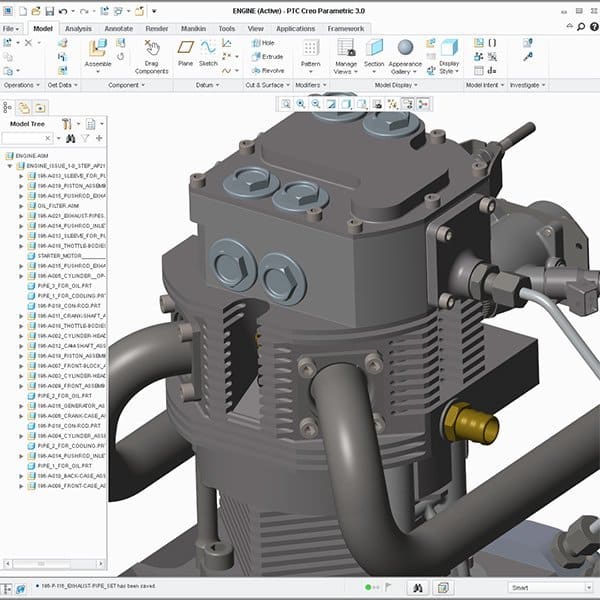


PTC Creo’s analysis tools and sheet metal modeling capabilities have also been enhanced in version 3.0. Version 3.0 also offers hardware libraries and automated fastener assembly workflows, new support for graphical realism and an improved help system with dedicated tools for new users. It eliminates the need to manage multiple versions of data, and you can move back and forth between design branches seamlessly, which should save you lots of time and effort. PTC Creo Parametric, for example, has been updated with the PTC Creo Design Exploration Extension, an environment for developing design alternatives, investigating modeling approaches and safely understanding the consequences of design changes within your parametric environment. On the efficiency front, PTC Creo 3.0 marks the debut of some new and enhanced capabilities and workflows. Additionally, PTC Creo Direct lets you quickly develop concept designs that are fully reusable in PTC Creo Parametric. PTC Creo Layout has been enhanced with new tools that support 2D concept engineering with seamless re-use in the 3D parametric environment. It should provide fast and flexible concept development.

What Align does is it lets you combine organic geometry creation and modification with associative parametric design intent. PTC Creo Parametric has a new design capability inside of its Freestyle functionality called Align. PTC Creo 3.0 offers both new and enhanced concept design tools. First, let’s take a quick look at the other two areas. Multi-CAD is the big one, but we’ll get to that in a second. In broad terms, PTC Creo 3.0 sees enhancements in three major operating areas: Multi-CAD technology, concept design and efficiency. PTC released version 3.0 of its PTC Creo suite of design software last week at its premier event PTC Live.


 0 kommentar(er)
0 kommentar(er)
